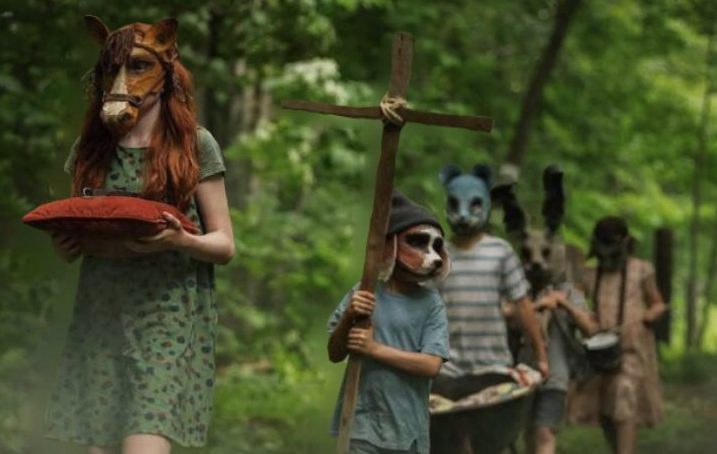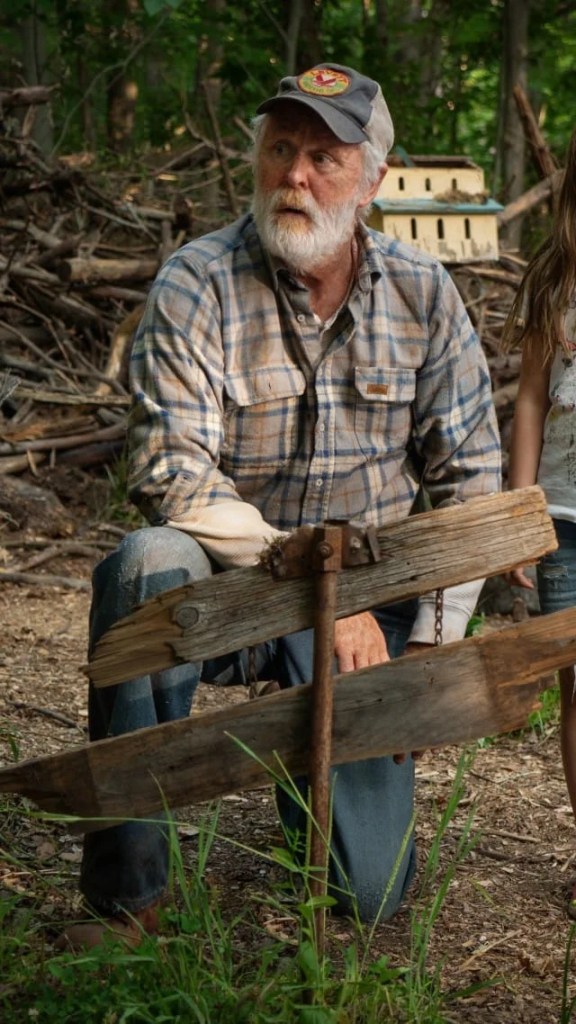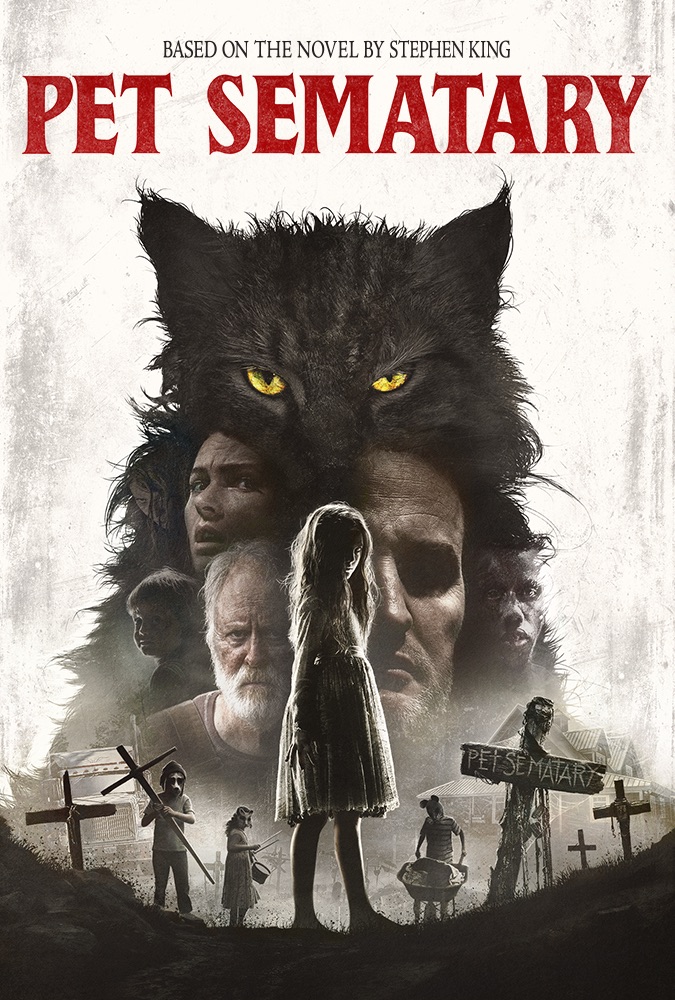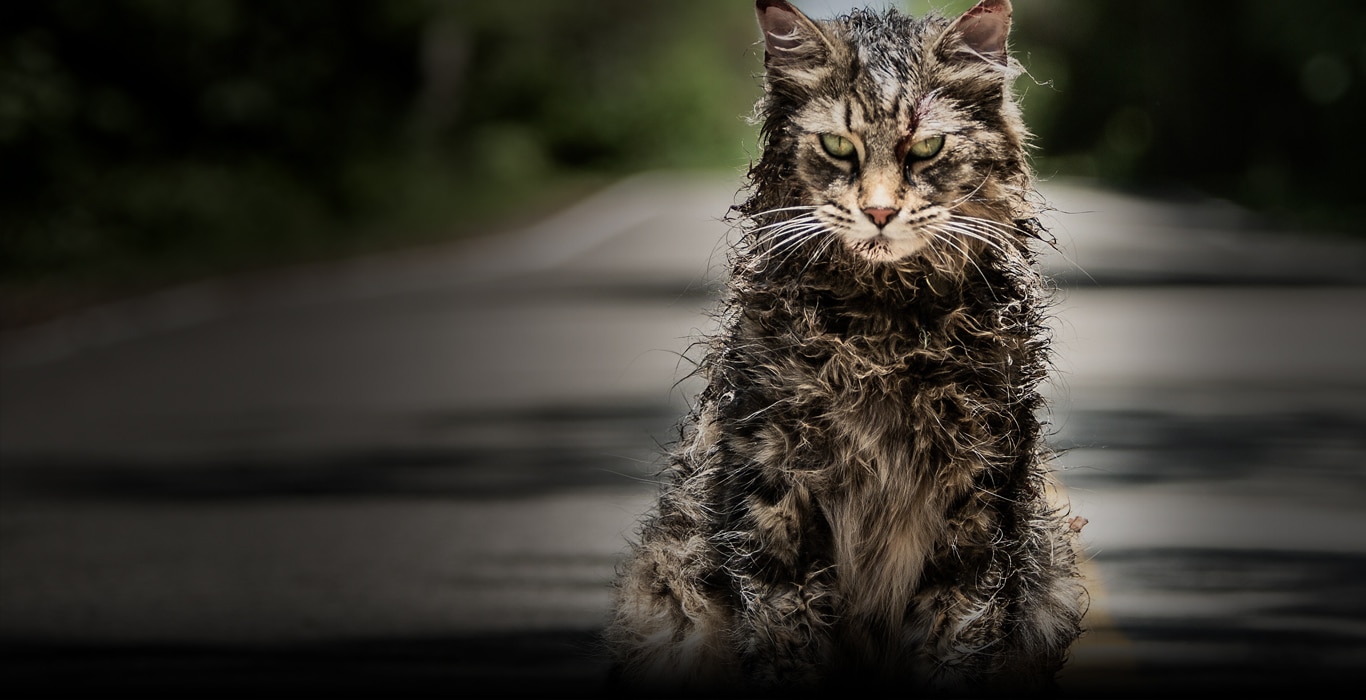
When I saw that Pet Sematary was being remade, I had a strange sense of deja-vu. Just like IT, another late-80s/early 90s Stephen King adaptation which has recently received an overhaul, the original version of Pet Sematary is bound up with late childhood memories for me, with scenes which have stuck in my head long into adulthood (the lines “No fair! No fair!” came rushing back to me when I watched the new film, for the first time in decades.) Actually, I first saw both IT and Pet Sematary within a very short time of one another, so it’s interesting that there are new versions of each within a fairly short time, too – something which probably represents something about the current market in 80s and 90s nostalgia; these days, us kids of the 80s and 90s now have the disposable income filmmakers are after. The older source material is being brought up to date in a series of recognisable ways, however: I knew that, if the IT remake was anything to go by, then I could expect a darker, more gritty re-interpretation of Pet Sematary. And yes, this is what we get: the new film is slicker, harsher fare, which takes great pains to strike out on its own. However, in so doing, it opts for a number of problematic changes to the source material which rest a little uncomfortably. In a nutshell, there’s a lot to commend in the 2019 story, but a lot of things to question, too.
The story starts familiarly enough, with the Creed family relocating to rural Maine so that Louis, who is a doctor, can take up a new position which encumbers his time less, allowing him more time with his family. So Louis (Jason Clarke, who looks like a Satanic Chandler here), wife Rachel (Amy Seimetz), daughter Ellie (Jeté Laurence) and little Gage (played by twins Hugo and Lucas Lavoie), alongside the cat, Church (played by a whole host of felines!) arrive at their new, spacious abode. The house’s property line extends way out back, encompassing a large swathe of local woodland – as is explained to them by friendly neighbour Jud (the inimitable John Lithgow).

However, it’s only a (very) short space of time before Ellie and Rachel discover something strange on their property – the ‘Pet Sematary’ of the title, brought to the screen in a Wicker Man-reminiscent scene as a group of local children, in animal masks, escort a deceased pet there. This disconcerting event aside, other things soon seem to go wrong for the Creeds. Louis loses a patient, a young man called Victor, who just before he dies speaks to him directly as if he knows him and even seems to revive momentarily, warning Louis about what is to come. And then, when Church is knocked down and killed, with Jud’s guidance Louis takes the fatal step of burying him on the land beyond the Pet Sematary – land which has strange powers to resurrect. Granted, in this instance Jud doesn’t share the story of Timmy Baterman, but all the same, Louis’s thinking already seems disordered. He is dreaming – or is he? He even awakens with his feet caked in mud, as if he has been in the woods.
Things can only go from bad to worse. Church indeed returns, ostensibly now as an evil cat (though truth be told, he doesn’t do anything that my cat doesn’t do on a daily basis). Louis quickly finds himself considering his rational world view, reinterpreting both what is important and what is real – the film’s sense of American folk horror seems stronger here overall, with the land holding sway over civilised ideas – whilst Rachel struggles with barely-repressed childhood memories of her deceased sister Zelda, with the house itself only too ready to oblige the trauma by throwing hallucinations her way. The film seems to be escalating towards the crescendo that we all know and expect. But then, in an about-face, the screenplay decides to simply dodge the original story’s most infamous sequence – the (spoiler alert?) resurrection of Gage Creed, and does something else instead. To explain what would be to heavily spoiler, as the rest of the film leans heavily on this writing decision.

Thus, unfortunately, the second half of the film struggles to hold together in the way that the first half does. I was, if not ready to love the 2019 Pet Sematary – you can only truly love one Pet Sematary at a time – certainly ready and willing to give it kudos for managing an effective sense of pace, with some neat atmospherics and visuals. The visuals and the atmospherics are still there in the second act, but the pace certainly seems to dissipate, as the film’s new direction forces it to engage with certain aspects of the effects of the ‘sour ground’ which are left to imagination in the older film, a tactic which made the overall horror more unsettling. Indeed, by avoiding a re-tread of the Gage section of the novel/first screenplay, the newer film goes to a place where it has to enunciate some of its mysteries; the remainder of the film then feels rushed, with a new conclusion (apparently selected from various filmed options) which lacks the stark horror of the original. I’ll always wonder how one of the other potential endings would have worked here; I really don’t think the one we actually get surpasses the oblique malign power of the original. Of course, subtract all of the moments making endless reference to other Stephen King stories and films, and there could have been a bit more care for the story at hand. The ending is impacted both by the horror tropes which are added in, and the weight of fan service. This is an indisputable shame.
It’s no easy thing though, and certainly no guaranteed easy money to remake a story which has such a long history; even a casual one-time viewer or reader would always have a strong idea of what was coming, so no one could blame directors Kevin Kölsch and Dennis Widmyer for deciding to forge their own vision in their rendition of Pet Sematary. And there are many enjoyable aspects to this polished, often unsettling film. Overall, this remains a worthwhile watch, albeit one which takes a risk and suffers somewhat for its ambitious streak.
